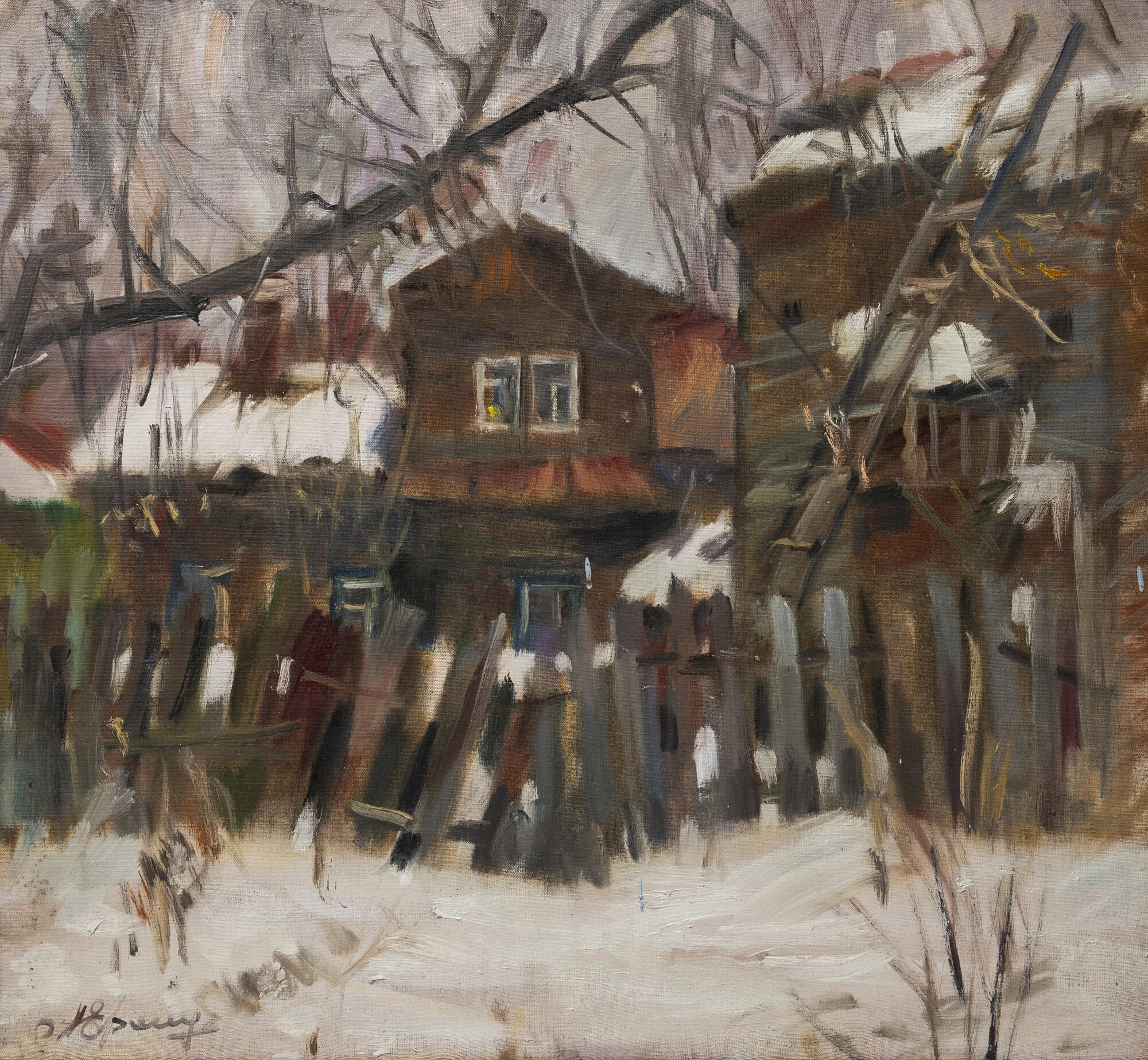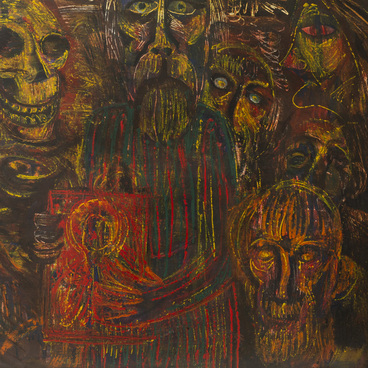Albert Ivanovich Yeryomin (1938–2020) was one of the leading artists of the Kostroma landscape school of painting. He was one of the artists who were trained at the Kostroma Art School with a strong emphasis on the traditions of the Russian realist school.
From the very beginning, reality — as in the natural and objective world that surrounds everyone — was at the center of Albert Yeryomin’s aesthetic experiences. At the same time, Kostroma was always the main subject in the artist’s works. This was the city where he was born, lived and worked. A city with a historical past and a distinctive look that was fading away. The desire to preserve the memory of old Kostroma and its historical appearance became the leitmotif of his work.
Albert Yeryomin’s paintings constitute a kind of artistic chronicle of Kostroma. Many old buildings, merchant mansions and courtyards have been preserved only on the artist’s canvases. This not only makes them valuable as pieces of art, but also as historical documents.
One such work is the painting “Courtyard on 15 Lenin Street”. The artist captured a leaning fence, with old wooden houses crowned with snow caps in the background. The painting looks more like a study painting because of thick brushstrokes. Its deliberate incompleteness makes it more emotionally impactful.
Old houses and objects were disappearing before Albert Ivanovich’s eyes. He hoped that wooden architecture would thrive once more in the future, because he believed that wood was the soul, body and the foundation of Russia. With his keen eye and skillful hand, the artist put to canvas the city’s houses and alleyways, which are the soul of old Kostroma. Even though Yeryomin often depicted the same subject matter, each time he created works of varying emotional intensity — as if portraits of the same person in different moods.
From 1964 to 1975 Albert
Yeryomin worked in the Ipatiev Monastery Museum-Reserve in Kostroma. He was
actively involved in turning the individual buildings of the monastery’s
ensemble into museum objects. He stood at the inception of this museum’s first
exhibitions and its branches in the districts of the region. He made a great
contribution to the development of the museum system of the Kostroma region as
a whole.


